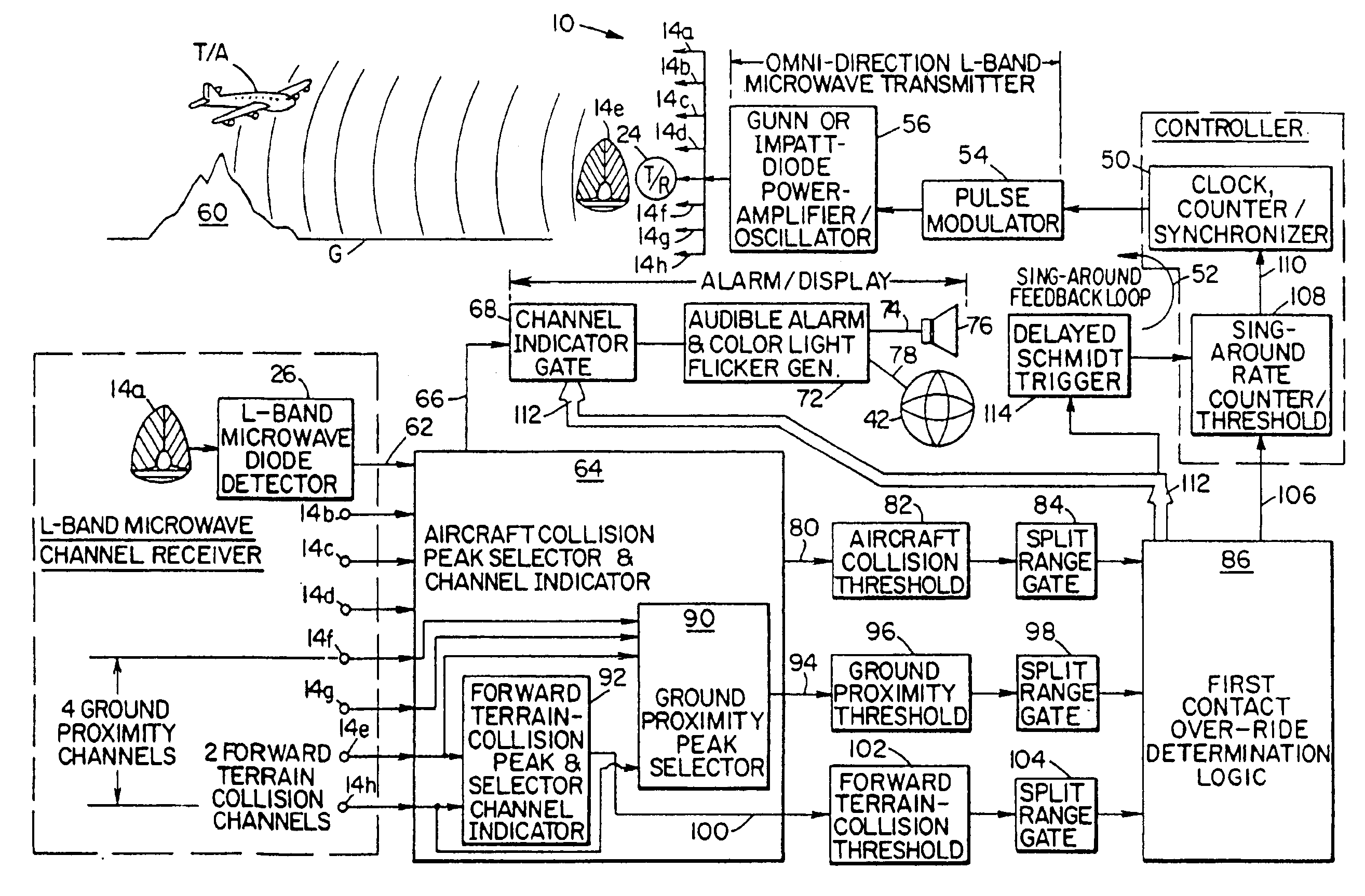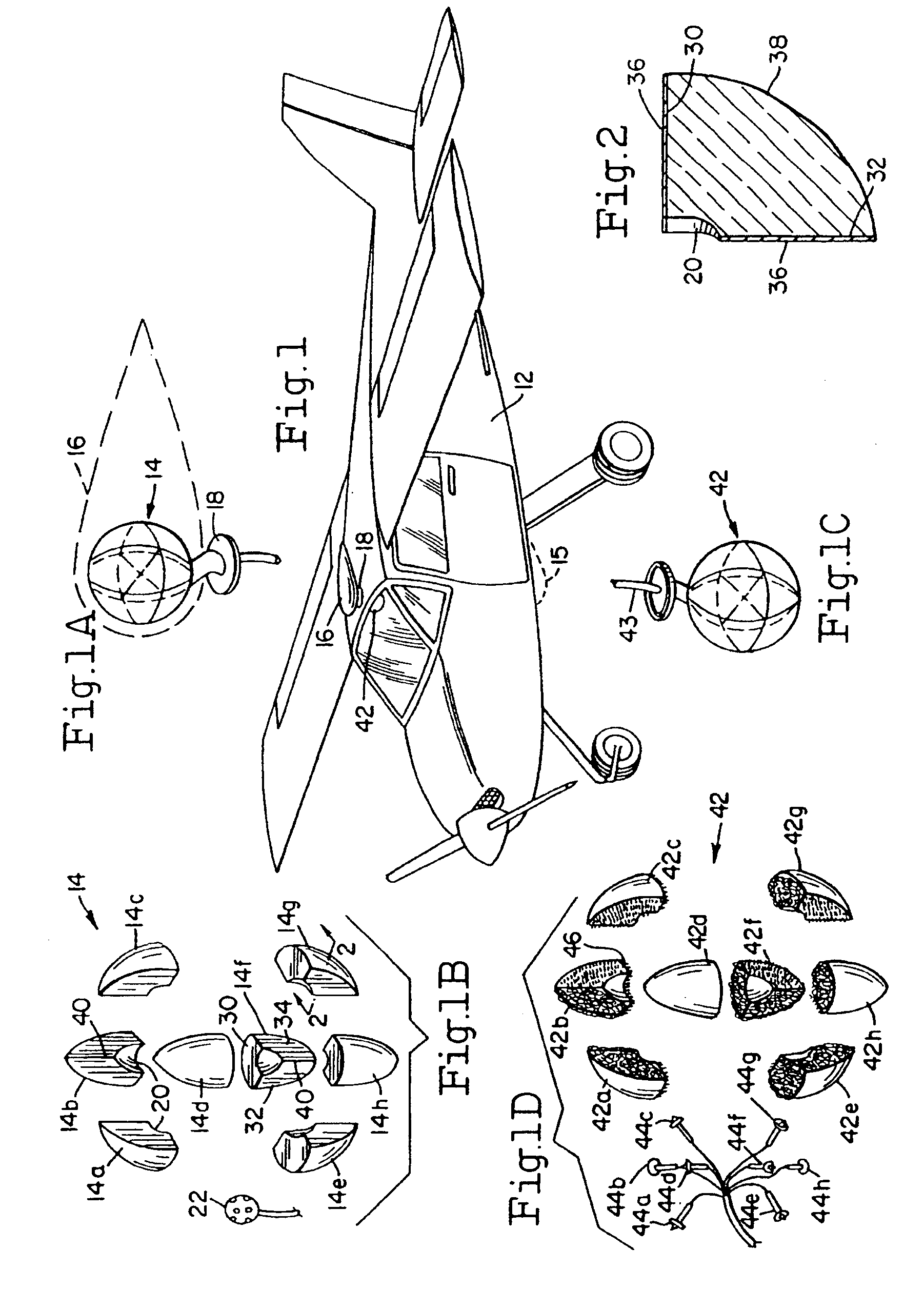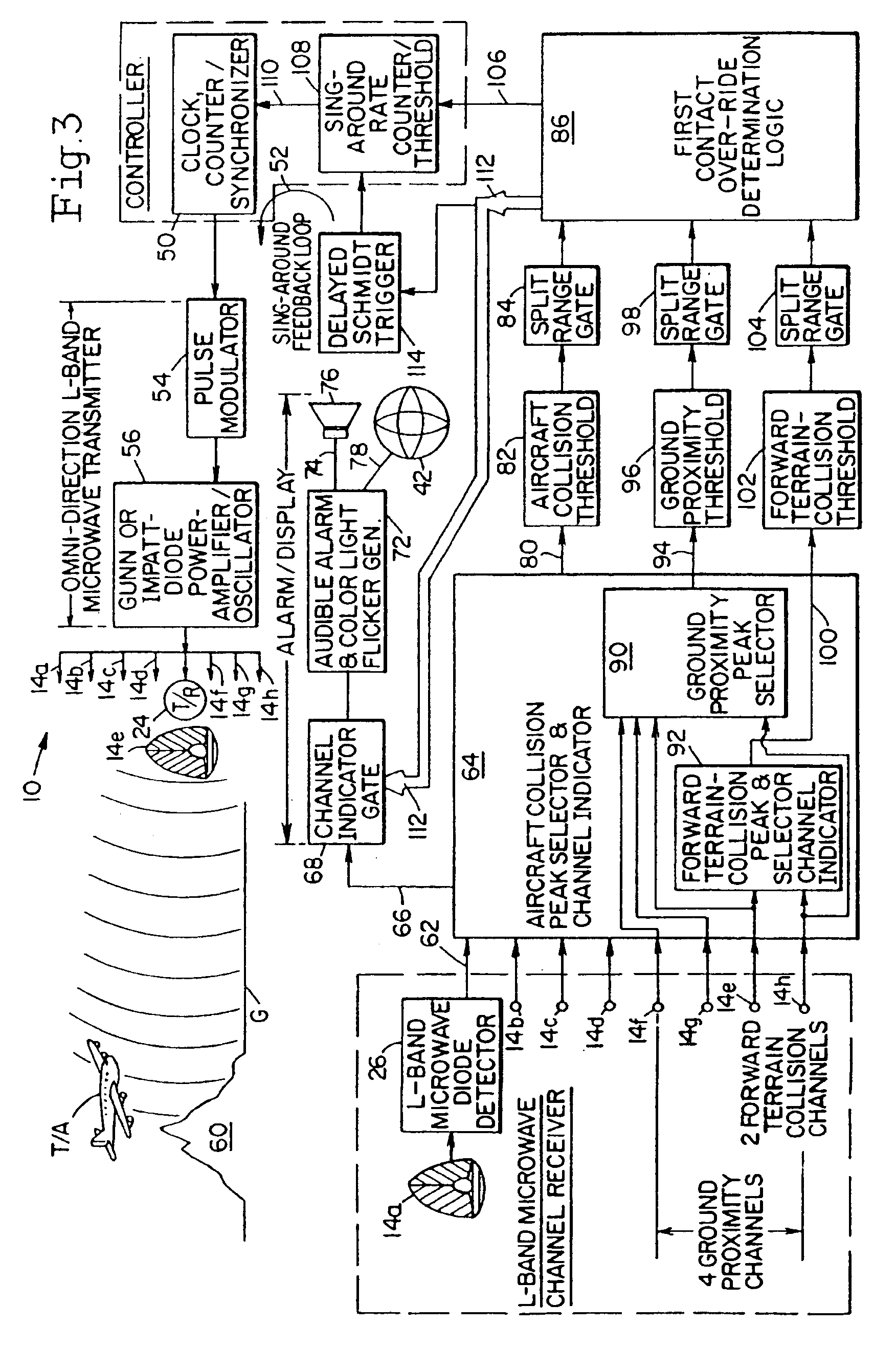Collision avoidance system for use in aircraft
a technology for aircraft and collision avoidance, which is applied in the direction of antennas, instruments, movable body antenna adaptation, etc., can solve the problems of commercial jet pilots being burdened, systems being complicated and expensive, and unavoidable collisions, etc., and achieves the effect of low cos
- Summary
- Abstract
- Description
- Claims
- Application Information
AI Technical Summary
Benefits of technology
Problems solved by technology
Method used
Image
Examples
Embodiment Construction
[0017]The novel UNICORN™ system 10 of the invention as used primarily with smaller private aircraft 12 includes a hollowed-out spherical antenna 14 (FIG. 1A) constructed from a dielectric material such as polystyrene or Lucite. Antenna 14 is about twelve (12) inches in diameter and is mounted within a protective streamlined, unicorn shaped, transparent radar dome 16 fixed at 18 on the brow of the aircraft above the plane's cockpit. Dome 16 is constructed of a material which does not interfere with operation of antenna 14.
[0018]As shown in the exploded view of FIG. 1B, antenna 14 is formed by dissecting a hollowed-out sphere into a plurality of equal “orange-wedge” sectors, e.g. eight equal octanes 14a, 14b, 14c, 14d, 14e, 14f, 14g and 14h. Each octant has an inner edge 20 scooped out so that when the octants are fastened together as in FIG. 1A, a central cavity is formed which houses a signal transmitting and receiving component assembly 22 within. As will be described in detail wit...
PUM
 Login to View More
Login to View More Abstract
Description
Claims
Application Information
 Login to View More
Login to View More - R&D
- Intellectual Property
- Life Sciences
- Materials
- Tech Scout
- Unparalleled Data Quality
- Higher Quality Content
- 60% Fewer Hallucinations
Browse by: Latest US Patents, China's latest patents, Technical Efficacy Thesaurus, Application Domain, Technology Topic, Popular Technical Reports.
© 2025 PatSnap. All rights reserved.Legal|Privacy policy|Modern Slavery Act Transparency Statement|Sitemap|About US| Contact US: help@patsnap.com



